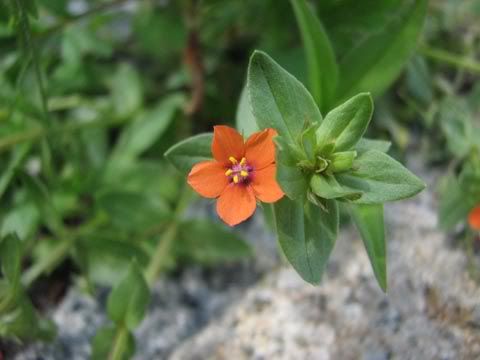365 Urban Species. #185: Scarlet Pimpernel

Photo by cottonmanifeso. Location: Castle Island walkway, South Boston.
Urban species #185: Scarlet pimpernel Anagallis arvensis
Imagine our surprise, when walking the asphalt walkway that encircles Pleasure Bay, nearly a mile away from the shore, when we discovered an unknown wildflower. All along the paved path, busy with summertime stollers, there were clumps of mugwort, chicory, and smartweeds. Suddenly, we came across a low, prostrate weed, with the most lovely little star shaped, rich orange flowers, and none of us on the Urban Nature Walk had ever seen it before. Some research showed it to be scarlet pimpernel, which, while it is known and named for its red color, can tend toward orange, and even has red and blue varieties.
How does a plant find its way to a space in a paved walkway surrounded by salt water? Seeds are surprisingly sturdy vessels of life. The seed of the scarlet pimpernel is known to have been buried for 30 years and then, put in the right conditions, sprung to life as a new plant. More tellingly, there are records of scarlet pimpernel seed having been found in the droppings of gulls. Since the droppings of gulls do not constitute a rare substance along the coast of Boston, this seems a likely origin for our plant.
This attractive little weed is a native of Eurasia. It tends to grow in waste areas, not rich cultivated soils, and favors high calcium levels (a quality associated with seaside areas, due to mollusk and crustacean remains in the sand). It is relatively rare in eastern North America, but much more common on the West Coast and in the Midwest.